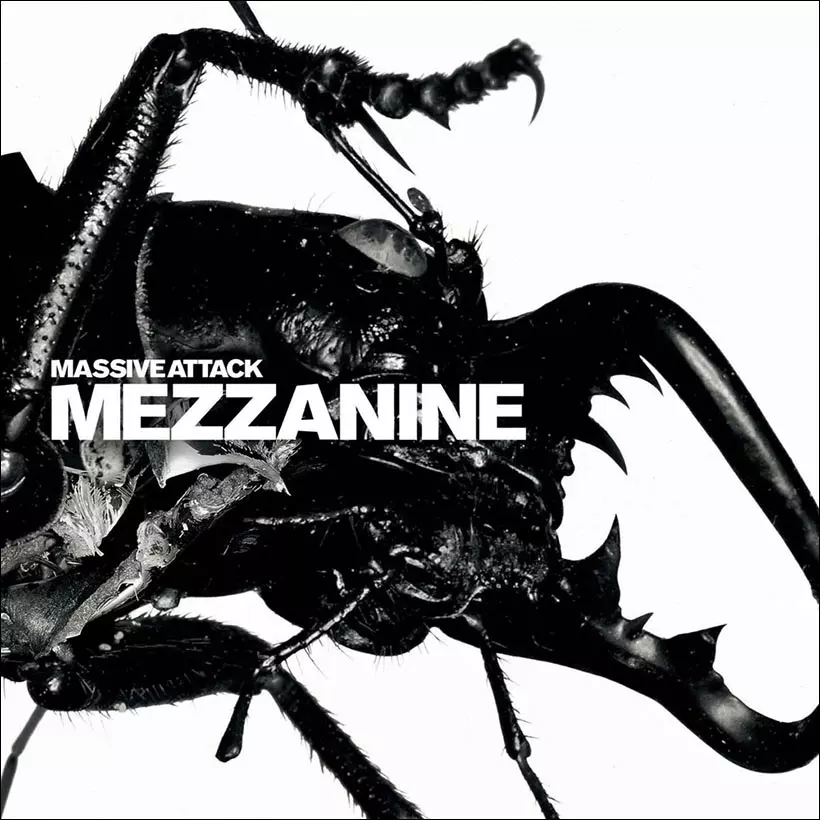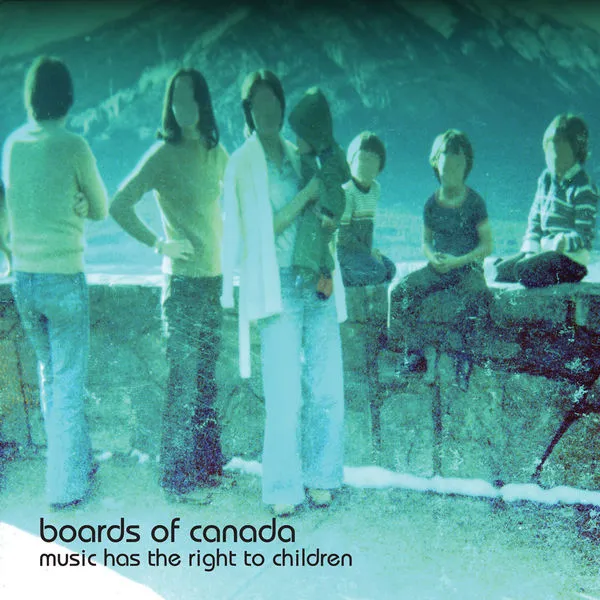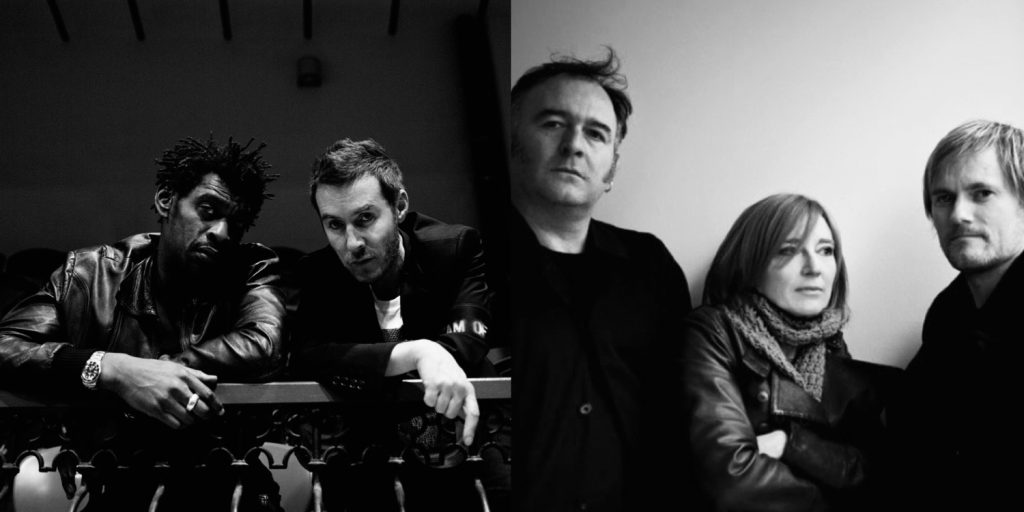Writing about this topic came immediately into my mind after listening to Portishead’s legendary “Dummy” album, released in 1994. Yes, I know one of their band members dislike the term ‘trip hop’ (Portishead on avoiding the media, 2008), but I’ll still continue using the term. The sound design and manipulation in this album is just magnificent. You can hear interesting and unexpected breaks in front of a melancholic atmosphere that sometimes reminds you of lost tapes from an unknown source, and the extensive use of these characteristics in this album and in many other trip hop tracks makes me transcend to an alternate dimension where I experience something like “a purgatorial illusion” (unable to describe it but it’s just unreal), especially the song “Strangers”. Pretty psychedelic stuff.

There’s another track that is pretty popular in the genre, which is “Angel” by Massive Attack. A timeless classic, this one makes me feel clashing emotions such as melancholia and aggression. It has a dark, somewhat terrifying atmosphere but it also pressures you to overcome your fears, just like an interpretation of its music video. Massive Attack is an amazing band that just gives me the chills easily with their sound design.

There are many other beautiful and popular trip hop tracks out there that emerged in the 90s and early 2000s, but where is this genre now? Where can you find the psychedelic and melancholic characteristics of this beautiful genre nowadays?
Well, one of the examples I can think of is simply Burial himself. Maybe he does not use hip-hop style breaks in his tracks like the famous 90s trip hop songs, but I think his dubstep/future garage sound that is prominent in his work until Rival Dealer has characteristics that are really close to the trip hop sound. It’s like he’s interpreting the trip hop sound with garage elements and giving it a somewhat “after rave” and sometimes “falling into the void” feel. I think his tracks “Kindred”, “Ghost Hardware” (my favourite tune of all time), “Near Dark” and “Pirates” are great examples to hear this interpretation. In addition, Burial’s rework of Massive Attack’s “Paradise Circus” also drives the feelings you get from trip hop to a really extreme level with its dreamy but depressive sound design.

Deriving from Burial, trip hop influences can be heard from artists such as Sorrow and Vacant, who both have a sound design that reminds the listener of Burial but also is extended to a level where you hear pretty original stuff, kind of like a modern remake of his sound. Sorrow’s tracks “Sheol”, “Quatrain”, “1+1” and “Homesick”, and Vacant’s tracks “Greyheart”, “Walkway”, “Reality”, “Blackwall” and “Sentiment” really fills in the void of contemporary trip hop in my opinion.
Since we are talking about Burial, one of the forward-thinking musical acts in the dubstep and UK garage scene, I would also like to talk a little bit about the term “post-dubstep” that emerged in early 2010s with artists such as James Blake and Mount Kimbie. James Blake’s “Klavierwerke” has those trippy neo-soul vocal sounds along with its deep dubstep bass and groovy rhythm, a pretty good track in my opinion to describe trip hop influences in the early 2010s. Mount Kimbie’s pretty underrated track “Fall Out” also has some trip hop influences with its unexpected but trippy drum introduction and positive but also deep atmosphere with a little bit of contradictory emotional feeling in my opinion. Fast forward a couple of years close to present time, Mount Kimbie’s album “Love What Survives” interprets the trip hop sound with some indie/alternative influences, especially in the songs “You Look Certain” and “How We Got By” featuring James Blake, who also in my opinion, retains the trip hop influence in his latest album “Friends That Break Your Heart” especially with the songs “Famous Last Words” and “Say What You Will”, interpreting the trip hop sound with trap elements this time (which is not something that I’m interested in a lot since trap is my least favourite electronic genre, but hey his vocals are really good in this album so I won’t complain other than saying “I miss the old James Blake”).

Moving on to the umbrella term “downtempo” which is where trip hop belongs to as one of its subgenres, at least according to Wikipedia. Even though I think that they don’t give the exact same feelings that trip hop gives and have less similar characteristics, the music of Macroblank (classified as barber beats, a subgenre of vaporwave) and lo-fi hip hop, which both fall under the term ‘downtempo’ along with trip hop, have a bit of stuff in common with trip hop in terms of nostalgic and melancholic trippy sound and sampling. I would recommend Macroblank’s “flesh and soul” album and idealism’s (one of my favourite artists from the lo-fi hip hop scene) “rainy evening” EP for a bit more optimistic and clear (compared to the complex and clashy feelings you get from listening to trip hop) interpretation of trip hop music. DJ Shadow is also another great example, with his universally acclaimed album “Endtroucing…”, which was highly influential in instrumental hip hop, using many psychedelic elements in tracks such as “Midnight In A Perfect World” and “Napalm Brain / Scatter Brain – Medley” with samples from jazz, funk and psychedelic music, which all had an influence in the development of trip hop.

Furthermore, I would also like to talk about one of my big influences (though I will cover them in more detail in another article): Boards of Canada. The duo had their first acclaim with their album “Music Has The Right To Children”, which came out pretty much at the same time period along with Massive Attack’s popular trip hop album “Mezzanine” and Portishead’s self-titled sophomore album, and the album explores nostalgia associated with happy childhood memories while making the listener feel weird and uncomfortable with psychedelic sound design and sampling. The fusion of hip hop beats with lush electronic sounds that make you wander in a nostalgic realm in this album gives the listener a similar feeling that is achieved while listening to the defining trip hop albums mentioned above. I cannot recommend the track “Sixtyten” enough from this album that amazingly achieves this fusion. The interesting part here is that the duo mentioned in an interview that they were not satisfied with the electronic dance music released in that era and they were more influenced by non-electronic acts for their first album (Reynolds, 2018). This experimental and trippy fusion can also be heard in the duo’s subsequent albums, particularly in their second album “Geogaddi” released in 2002, especially the tracks “Music Is Math” and “Julie And Candy”, and some of the tracks in their latest album “Tomorrow’s Harvest” released in 2013, notably the tracks “Jacquard Causeway” and “Nothing Is Real”.

In conclusion, we can see that one of the most important music genres of the 90s had a major influence in many musical acts in the last 20 years and its influence can be heard in many different styles of electronic music. Still, the original trip hop sound of the 90s is a really particular sound that, in my opinion, did not continue exactly even with the later releases of the pioneers of the genre. We can say that we are now in the post-trip hop phase with the styles and artists mentioned above, and I’m excited for how the sound will evolve further in the future.
P.S. I would also suggest checking out my tracks In Low Spirits and Paradise Keys from my debut album which were influenced by the trip hop sound of the 90s!
References:
Portishead on avoiding the media, playing Coachella, and their tense new album (2008) Vulture. Vulture. Available at: https://www.vulture.com/2008/04/portishead_on_avoiding_the_med.html (Accessed: October 24, 2022).
Reynolds, S. (2018) Why Boards of Canada’s Music Has The Right To Children is the greatest psychedelic album of the ’90s, Pitchfork. Pitchfork. Available at: https://pitchfork.com/features/article/why-boards-of-canadas-music-has-the-right-to-children-is-the-greatest-psychedelic-album-of-the-90s/ (Accessed: October 24, 2022).
